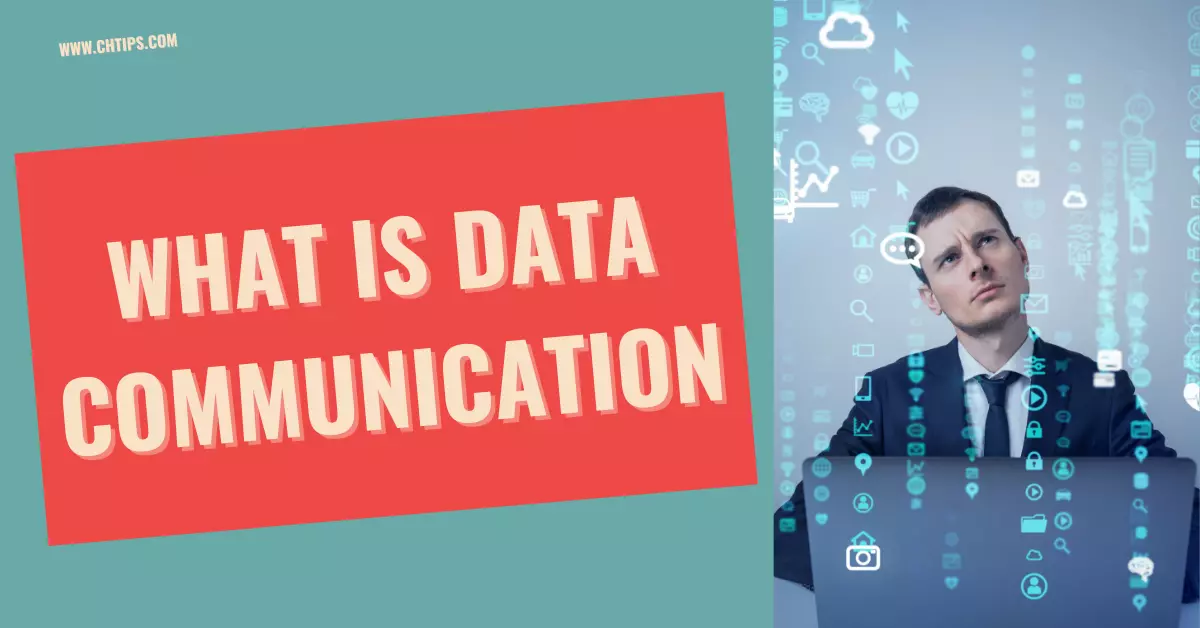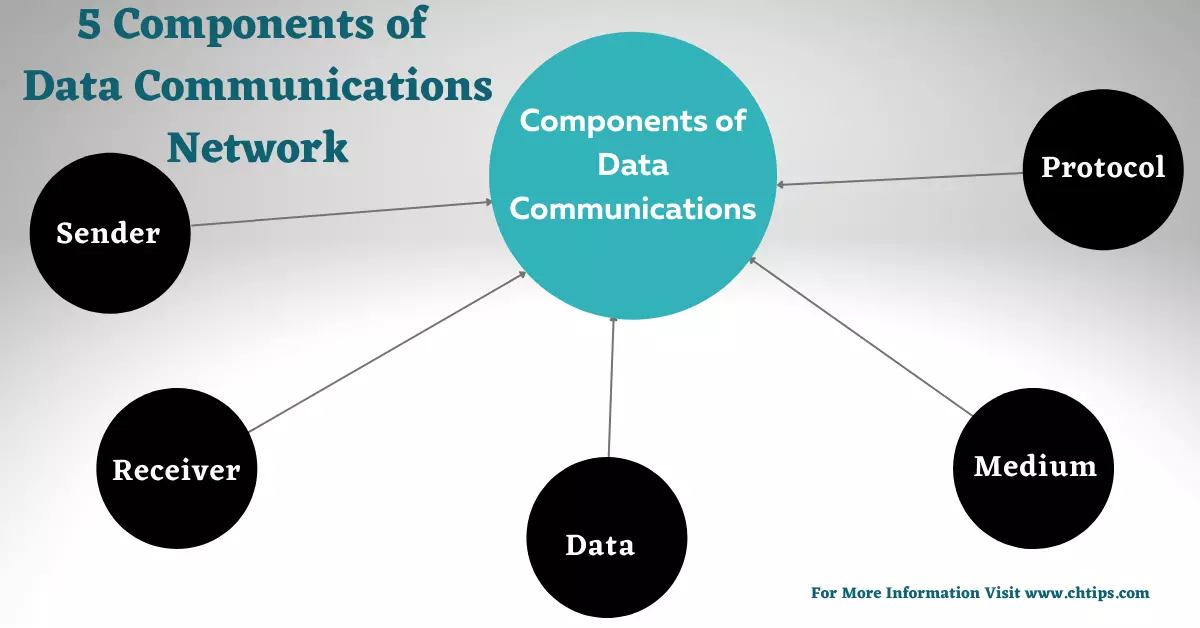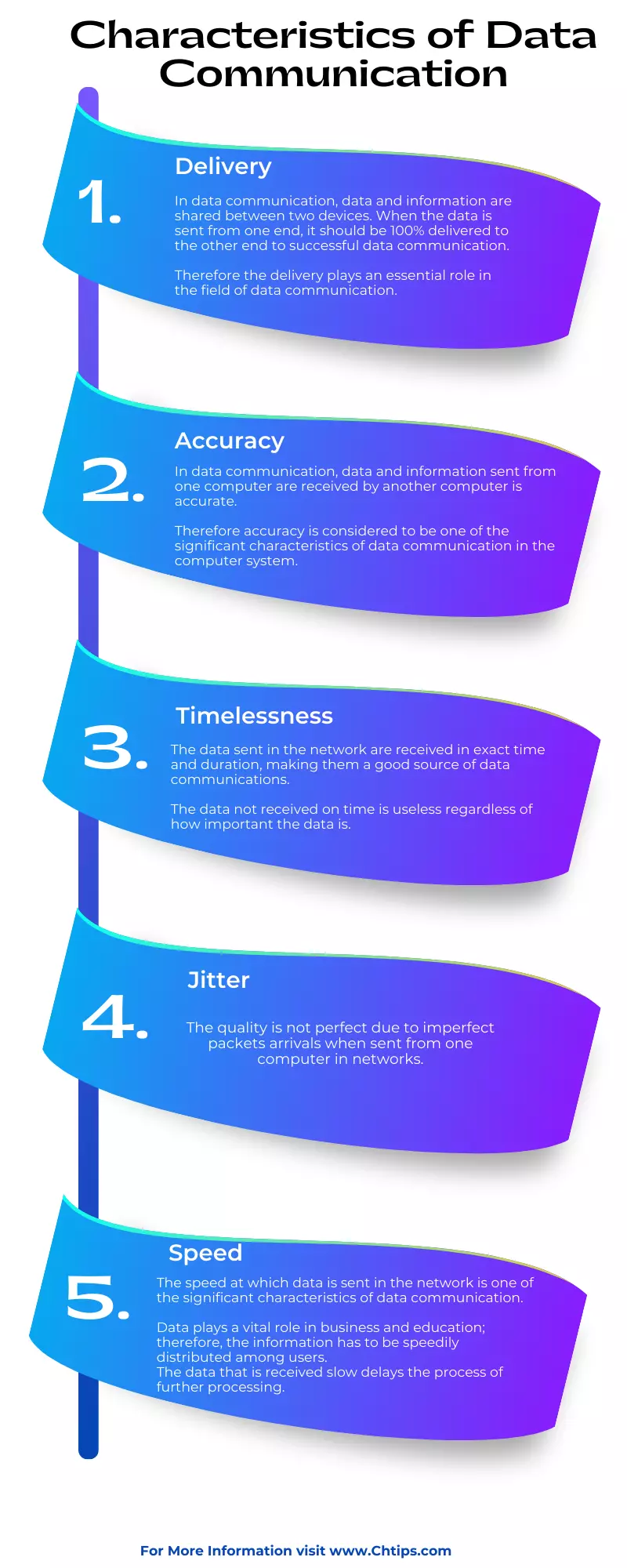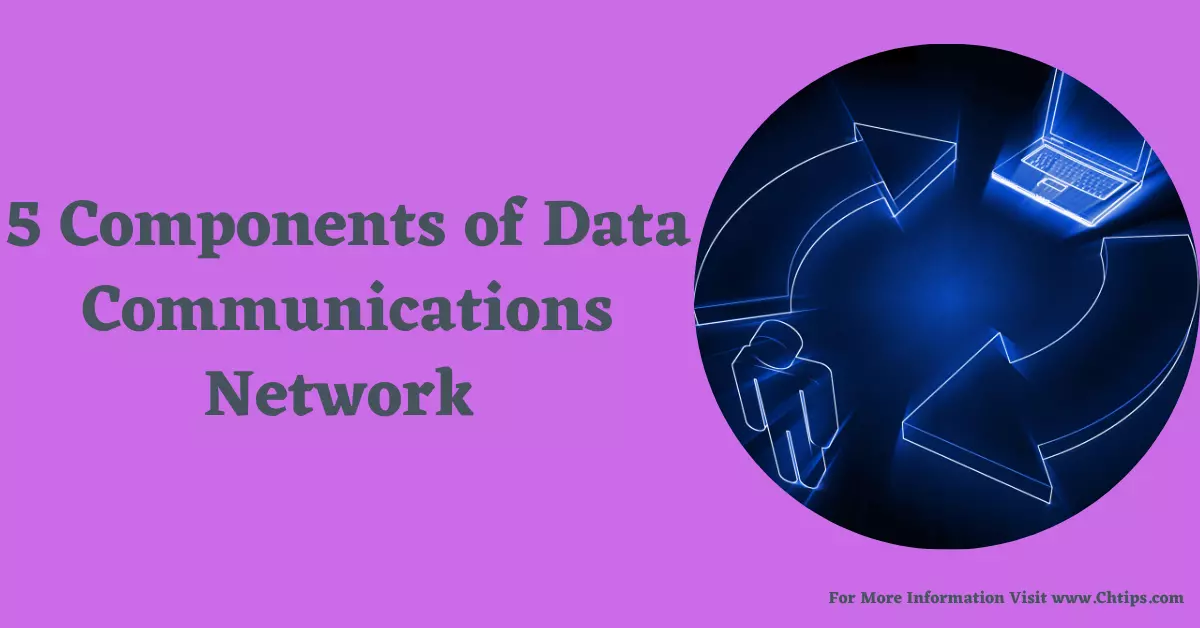Dear readers, this article will learn 5 components of data communications in computer networks with its functionality and examples, types, and characteristics in an easy language.
The term data communication in simple words can be explained.
Transferring or sharing data and information between two computers or devices in a network.
These devices or computers must be capable of sending and receiving information between them called “Data Communication”.
In this era, technology is developing rapidly, beyond our imagination. We come across numerous new inventions and discoveries in various fields in our daily routine lives.
The data communication industry also developed dramatically over a few decades.
Data communication is used in airplanes, ships, and satellites; various technologies use navigation systems for communication.
Data transfer and exchange have been made very efficient with modern means of data communication.
What is Data Communication in Networks With Examples?
Data communication can be termed the exchange of data and information from one point to another or from one location to another.
In this process, one computer or device sends data called as sender to another computer called the receiver.
This data communication can occur between two devices or computers or between multiple computers in a computer network.

They are responsible for transferring or exchanging data in the form of digital or analog between computers that are connected with the help of a communication channel.
The data and information are transferred in signals from one location to another.
Data communication in computer networks helped in growing business globally.
The data and important information can be quickly transmitted from one location to another, eventually helping make rapid decisions.
This quick decision-making ability helped many businesses grow more efficiently than ever before, as we all know that we live in a global village.
The majority of the business has a global reach; therefore, quick decisions positively impact clients.
IT companies, online education forums, social media websites, video chatting, and conferencing are making the lives of humans more up-to-date as the information can be accessed within just a few clicks.
The internet is considered the most used means of data communication as they are a fast and reliable source of data and information.
Using the internet data communication process can be made very easy with the internet.
The data and information can be shared via Google Drive, email, or directly upload text, documents, spreadsheets, images, and videos.
The internet connection can be established in the wireless method or wired method.
What are the 5 Components of Data Communication and its Functionality?
There are 5 components of data communication in a network are as follows.
- Transmitter/Sender
- Receiver
- Message / Data
- Medium
- Protocol
1. Transmitter or Sender
The sender can be termed a device that sends data from one location to another.
The sender is a computational device capable of transmitting data and information from one end to the destination.
This sender can be a computer, laptop, walkie-talkie, smartphone, smartwatch, or just by video chatting and video conferencing.
2. Receiver
A receiver can be a computer designed and developed to accept data and information sent by the source. The receiver can be termed as the destination where data has to reach.
The receiver can be a computer, television, laptop, fax, smartphone, etc.
3. Message / Data
The data and information are exchanged between the sender and receiver with the help of communication channels.
The data can be text, documents, spreadsheets, symbols, images, pictures, videos, numbers, sound, etc.
4. Transmission Medium
The data is transferred from one location to another location; the source from where the data is sent is called the “sender”; on the other hand, the receiver (destination) who receives the data is called the “receiver”.
The data needs a medium to transfer data from sender to destination successfully, called “Transmission Medium”.
The transmission medium can be further categorized as
- Unshielded Twisted Pair Cables.
- Shielded Twisted Pair Cables.
- Optic Fiber Cables.
- Wireless Medium
5. Protocol
The data communication between sender and receiver to transfer data from one point to another is done using certain rules and regulations they are called “Protocol”.
To perform successful data communication, these protocols must be followed.
Different Types of Data Communications Networks?
The data communication networks can be of different types; they are
- Local Area Network (LAN)
- Metropolitan Area Network (MAN)
- Wide Area Network (WAN)
- Personal Area Network (PAN)
- Wireless Networks
5 Components of Data Communications with Image

Characteristics of Data Communications
The characteristics of data communications are
- Delivery
- Accuracy
- Timelessness
- Jitter
- Speed
- Cost-Effective
- Efficient

Related Articles
- 10 Uses of Computer in Different Fields With Pictures
- 10 Limitations of Computer System
- 10 Uses of Multimedia in Different Fields
- Types of Secondary Memory in Computer
- Characteristics of Fourth Generations of Computer
- Computer Basic Tutorials
Get In Touch
I have also written and compiled some articles on computers and telecommunications, and please go through them.
I hope you will like reading it.
I hope that all the questions and queries related to the 5 components of data communications in computer networks with their functionality and examples, types, characteristics in easy language have been answered here.
If you have any questions about What is Data Communication in Computer Networks.
Don’t hesitate to get in touch with me, and if you need to add, remove or update anything from the article, please let me know in the comment section or via email.
I will be more than happy to update the article. I am always ready to correct myself.
Please share this article with your friends and colleagues; this motivates me to write more related topics.
!!! Thank You !!!
